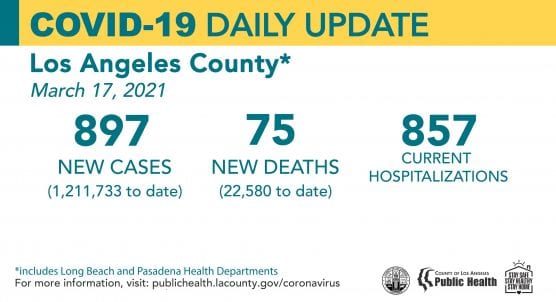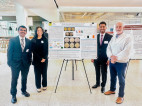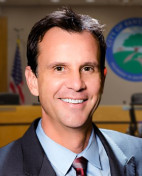Los Angeles County Public Health officials on Wednesday confirmed 75 new deaths, and 897 new cases of COVID-19 countywide, including 27 new cases in the Santa Clarita Valley.
One of the deaths was a young person, the second child younger than 18 years old to die of COVID-19 in the county. Details about underlying health conditions are unknown for the young person.
More encouraging news is that the seven-day average number of daily cases by episode date has decreased to 524 new cases per day as of March 9; the lowest since April 2 of last year.
The 7-day average number of daily deaths also continues to decline, and as of March 9, is 24. On February 9, the average number of daily deaths was 118.
To date, Public Health identified 1,211,733 positive cases of COVID-19 across all areas of L.A. County, including 26,877 total cases in the SCV — 27 more than Tuesday — and a total of 22,580 deaths, 279 of them among SCV residents.

“To all who are mourning someone who has passed away from COVID-19, we are deeply sorry for your loss and we wish you healing and peace at this very difficult time,” said Barbara Ferrer, PhD, MPH, MEd, Director of L.A. County Public Health.
There are 857 people with COVID-19 currently hospitalized and 28% of these people are in the ICU. Average daily hospitalizations are now fewer than 1,000, at pre-surge early-November levels.
Testing results are available for nearly 5,972,000 individuals with 19% of people testing positive. Today’s daily test positivity rate is 1.9%, a slight increase.
See more L.A. County COVID-19 info and a vaccine update later in this report.

California Wednesday Snapshot
Statewide, as of Tuesday, March 16, California Department of Public Health officials confirmed 3,532,496 COVID-19 cases (up 2,441) with 55,577 deaths from the disease (up 205) since the pandemic began.
There are 3,025 confirmed hospitalizations and 784 ICU hospitalizations in the state, continuing a slight downward trend.
As of March 16, local health departments have reported 99,579 confirmed positive cases in health care workers and 420 deaths statewide.
There have been 51,460,324 tests conducted in California. This represents an increase of 88,299 during the prior 24-hour reporting period.
The 7-day positivity rate is 2.0%, a slight upward trend.
Numbers do not represent true day-over-day change as these results may include cases from prior to yesterday.
As of March 17, providers have reported administering a total of 13,037,557 vaccine doses statewide. The CDC reports that 16,813,070 doses have been delivered to entities within the state.
Numbers do not represent true day-to-day change as reporting may be delayed.
See more California information later in this report.

Screencap from the Johns Hopkins University’s Center for Systems Science and Engineering COVID-19 dashboard, showing COVID cases in the United States as of Wednesday afternoon, March 17, 2021.
U.S. COVID-19 Cases Near 30 Million People; Deaths Near 540,000 People
Worldwide, 121,012,535 people have been infected by COVID-19 while 2,675,853 people have died of the virus as of 3:26 p.m. Wednesday Pacific Time, according to data compiled by Johns Hopkins University.
In the U.S., more than 29,602,515 Americans have been diagnosed with COVID-19. The number of people in the U.S. who have died due to the virus has now surpassed 537,923.
With 4.25% of the world’s population (328.2 million) and more than 20% of the confirmed COVID-19 cases, the U.S. also continues to lead the world in deaths.
By comparison, Brazil (population 209.5 million) is No. 2 in deaths with 282,127 — half of the U.S. total — and No. 3 in cases with 11,603,535. India (population 1.353 billion) is No. 2 in cases with 11,438,734 confirmed infections and No. 4 in deaths with 159,044, behind No. 3 Mexico’s 195,119 deaths, as of Wednesday afternoon.
Henry Mayo Newhall Hospital Wednesday Update
Henry Mayo Newhall Hospital on Monday reported its 146th death due to COVID-19, and the number of fatalities remained unchanged on Wednesday, according to hospital spokesman Patrick Moody.
Fifteen cases are pending (no cases were pending Monday), eight patients are hospitalized in a dedicated COVID-19 unit receiving ICU-level care (five more than Monday), and a total of 1,176 patients have been treated and discharged, Moody said.
The increase in pending cases “is just a temporary anomaly,” he said. “The increase in hospitalizations is modest but a reminder that we all need to remain vigilant.”
COVID-19 hospitalizations at Henry Mayo peaked on January 8, at 104 people.
The number of people who died at the hospital since the pandemic began remains at 145; the most recent death was reported Monday. According to Moody, 74 of the fatalities occurred in 2020, while 72 people have died so far this year.
Henry Mayo releases complete statistics weekly, usually on Wednesdays, unless one or more new deaths occur.
Privacy laws prohibit Henry Mayo from releasing the community of residence for patients who die at the hospital; residence info is reported by the L.A. County Public Health COVID-19 dashboard, which generally lags 48 hours behind.

Santa Clarita Valley Wednesday Update
As of 6 p.m. Monday, the latest update of the L.A. County Public Health dashboard counted 279 deaths among Santa Clarita Valley residents since the pandemic began.
Of the 279 SCV residents who have died, 238 lived in Santa Clarita, 17 in Castaic, seven in Acton, three in Agua Dulce, three in unincorporated Canyon Country, four in Stevenson Ranch, two in Valencia, one in unincorporated Bouquet Canyon, one in Lake Hughes, one in Newhall, one in unincorporated Saugus/Canyon Country, one in Val Verde, and one in a community not yet named.
Of the 26,877 confirmed COVID-19 cases reported to Public Health for the SCV to date, the community breakdown is as follows:
* City of Santa Clarita: 19,662
* Castaic: 3,650 (incl. Pitchess Detention Center & North County Correctional Facility*)
* Stevenson Ranch: 1,095
* Canyon Country (unincorporated portion): 812
* Acton: 457
* Val Verde: 325
* Agua Dulce: 260
* Valencia (unincorporated portion west of I-5): 185
* Saugus (unincorporated portion): 132
* Elizabeth Lake: 75
* Newhall (Unincorporated portion): 66
* Bouquet Canyon: 45
* Lake Hughes: 41
* Saugus/Canyon Country: 39
* Sand Canyon: 17
* San Francisquito/Bouquet Canyon: 15
* Placerita Canyon: 1
*Note: The county is unable to break out separate numbers for Castaic and PDC/NCCF because the county uses geotagging software that cannot be changed at this time, according to officials. Click here for the LASD COVID-19 dashboard.

Illustration of the 2019 novel coronavirus (2019-nCoV), which causes the respiratory disease COVID-19. Image: CDC.
L.A. County Variants Update
To date, Public Health has confirmed a total of 55 cases of COVID-19 U.K. variant, two cases of the B.1.525 variant, which was also first identified in the U.K., 21 cases of the New York variant and 1 case of the P.2 variant from Brazil in Los Angeles County. There have been no cases identified of the South African variant.
In addition, there have been 35 California variant B.1.427 cases identified and 276 of the California Variant B.1.429. The B.1.427 and the B.1.429 are both, slightly different sequences of what is commonly called the California variant.
Variants remain a concern, even as more and more people are vaccinated. As Public Health plans for additional re-openings, if there is more transmission of the COVID-19, there is more risk of variants dominating.
It is important for all of us to continue to do everything we can to reduce transmission, including masking and maintaining physical distance whenever we are outside of our homes and around others.
L.A. County Schools Update
As of March 16, 1,810 schools are providing on-campus services for high-needs students. This includes more than 99,000 students and more than 36,000 staff. A total of 55 school districts and 466 individual private and charter schools are approved for in-person instruction of students in grades TK through 12.
Public Health is surveying schools to assess which schools have already opened for in-class instruction and scheduling site visits as appropriate.
Schools have a variety of required safety strategies that must be implemented in order to open for on-campus learning and activities. Research has demonstrated that, when these strategies are layered together, schools can open for in-person learning in an environment that significantly reduces virus transmission.
In Elementary schools creating and maintaining stable groups is required for return to in-person instruction. Elementary education is usually delivered to students who stay in one classroom for all or most of the day with the same teacher, so maintaining stable groups is not that complicated for them.
In middle and high schools, Public Health is aligned with state directives and does not require a stable grouping of students in that setting. We do, though, recommend stable groups as a best practice that middle and high schools should adopt when reopening. We recommend maintaining stable groups of not more than 100-120 students and a team of teachers assigned to interact only with this one group of students.

Public Health’s school technical assistance team contacts all schools that are reopening to offer support and arrange site visits to ensure compliance with the safety protocols and recommendations for improvement. Since many families are still not comfortable sending their children back to school for onsite learning, schools that are open for in-person learning need to also offer 100% distance learning as an option for those families that prefer it.
Outbreaks at schools have been relatively infrequent in L.A. County. There have been 86 K-12 school-affiliated outbreaks since Sept 1, 2020. Two of the outbreaks had more than 12 cases and 66 of the outbreaks had less than 6 cases. Outbreaks at schools increased during the surge and steadily declined starting in January, after school outbreaks peaked at 15 for 2 weeks in a row. Starting in early February, there have been no new outbreaks in schools.
School staff has been eligible to be vaccinated since March 1. Many partners including school districts, schools, providers, unions, and health care providers worked together to coordinate closed pods for every single school district and additional vaccination sites for independent schools.
To date, 102,730 vaccine doses have been allocated to teachers and staff in K-12 public and independent schools through closed pods. Public Health also continues to set aside appointments at the large capacity county sites for teachers and school staff.
This Sunday, March 21, there will be vaccinations available for teachers and staff of independent schools at all five county large vaccination sites.

Last week, California hit its goal of vaccinating 2 million people who are living in communities across the state with the lowest score on the Healthy Places Index (HPI). They have set an additional goal of vaccinating 4 million people in these areas.
L.A. County is vaccinating a larger percentage of people in communities with fewer resources when compared to California overall. Last week, 32% of the people vaccinated in L.A. County were people who live in communities with the lowest HPI score, compared to the state, where 19% of people vaccinated live in the communities with the lowest HPI score. Public Health is relieved that we are able to get vaccines to the communities where we need them the most.
L.A. County Vaccine Update: Frontline Cases Plummet Post-Vaccination
The first group of people to be vaccinated in L.A. County were our heroes; those serving on the frontlines at our hospitals, in our healthcare facilities, and in the homes of those requiring constant care. Since late December, when healthcare workers began to be vaccinated, we have seen their case numbers plummet.
During the last week of December, there were 1,730 new cases of COVID-19 among healthcare workers. In the past three weeks, there have been fewer than 100 new cases across the entire county each week, the lowest number of weekly cases we have seen among healthcare workers during the pandemic.

This is by far the lowest number of new cases of COVID-19 among healthcare workers since last March and, in part, reflects that the vast majority of our healthcare workers are vaccinated.
Currently, 79% of skilled nursing home staff and 78% of residents received at least a first dose of the COVID-19 vaccine and 74% of all staff and 69% of residents received their second dose and are fully vaccinated.
It’s important to note that there is a high turnover rate among residents in these facilities, and this number only reflects rates among current residents, not the total number of residents who have been vaccinated. When the vaccine first was administered to residents at skilled nursing homes in L.A. County in late December, the average daily number of cases was more than 200 a day and has dropped to 3 a day as of March 9.
This is excellent evidence that these vaccines are working and adding a much-needed layer of protection among those with significant exposures, our healthcare workers, and those most vulnerable, our residents at skilled nursing facilities.

L.A. County Vaccine Update: Eligibility & Appointments
Currently, people who are eligible for the vaccine include healthcare workers, residents and staff at long-term care facilities, people who are age 65 or older, education and childcare workers, food and agriculture workers, emergency service workers and law enforcement, and people with certain serious health conditions and disabilities.
While COVID-19 vaccine supply remains very limited, Public Health officials continue to build an extensive network with pharmacies, federally qualified health centers, hospitals, health clinics, and community vaccination sites, including seven large-capacity sites:
* Dodger Stadium (operated by the city of Los Angeles)
* Six Flags Magic Mountain, 26101 Magic Mountain Pkwy, Valencia 91355
* California State University, Northridge, 18111 Nordhoff St, Northridge 91330
* Pomona Fairplex, 1101 W McKinley Ave, Pomona 91768
* The Forum, 3900 W Manchester Blvd, Inglewood 90305
* L.A. County Office of Education, 12830 Columbia Way, Downey 90242
* California State University, Los Angeles, 5151 State University Drive, Los Angeles 90032 (operated by FEMA)
The county continues to expand mobile vaccination services to better meet the needs of those in underserved communities.
For more information about vaccine appointments in L.A. County and when your turn is coming up, to sign up for a vaccination newsletter, and much more, visit www.VaccinateLACounty.com (English) and www.VacunateLosAngeles.com (Spanish). Vaccinations are always free and open to eligible residents and workers regardless of immigration status.

L.A. County Demographics — Cases and Deaths (excluding Long Beach and Pasadena)
* 0 to 4: 22595
* 5 to 11: 54629
* 12 to 17: 68515
* 18 to 29: 271340
* 30 to 49: 382123
* 50 to 64: 222142
* 65 to 79: 88653
* over 80: 32249
* Under Investigation 6785
Of the 75 new deaths reported today, 27 people that passed away were over the age of 80, 29 people who died were between the ages of 65 and 79, 12 people who died were between the ages of 50 and 64, four people who died were between the ages of 30 and 49, and one youth under the age of 18. Two deaths were reported by the City of Long Beach.
L.A. County Public Health’s Reopening Protocols, COVID-19 Surveillance Interactive Dashboard, Roadmap to Recovery, Recovery Dashboard, and additional things you can do to protect yourself, your family and your community are on the Public Health website, www.publichealth.lacounty.gov.

California Blueprint or a Safer Economy
With the Regional Stay at Home Order rescinded statewide as of January 25, all counties are now under the rules and framework of the Blueprint for a Safer Economy and color-coded tiers that indicate which activities and businesses are open based on local case rates and test positivity.
CDPH modified Blueprint thresholds on March 12 after the state successfully met its first vaccine equity milestone of 2 million administered vaccine doses in some of the state’s hardest-hit communities.
Blueprint summary as of March 16:
* 11 counties are currently in the Purple (widespread) Tier (including Los Angeles County)
* 42 counties are currently in the Red (substantial) Tier
* 4 counties are currently in the Orange (moderate) Tier
* 1 county is in the Yellow (minimal) Tier
The state released updates to the state’s reopening framework on Friday, March 5. The updates will allow outdoor ballparks, stadiums, and theme parks to open with significantly reduced capacity, mandatory masking, and other public health precautions. The updates will take effect on April 1.
Blueprint tiers are updated weekly on Tuesdays. Find the status of activities in specific counties.
More information about these updates, and which activities are allowed in the various tiers, can be found here.

Vaccinate All 58
In order to increase the pace of COVID-19 vaccine distribution to those at greatest risk, the state is prioritizing individuals 65 and older to receive the vaccine as demand subsides among health care workers. This effort will help to reduce hospitalizations and save lives.
To sign up for a notification when you’re eligible for a vaccine, visit myturn.ca.gov.
For more information on the vaccine effort, visit the Vaccinate All 58 webpage.
Tracking Variants
Multiple variants of the virus that causes COVID-19 have been identified globally during the COVID-19 pandemic.
These genetic mutations are expected, and some emerge and then disappear, while others persist or become common. Most variants do not have a meaningful impact.
Public health becomes concerned about a variant when it affects COVID-19 transmission, severity, testing, treatment, or vaccine effectiveness.
Get more information here on the variants CDPH is currently monitoring.

‘Safe Schools for All’ Plan
Governor Newsom launched the Safe Schools for All Hub as a one-stop-shop for information about safe in-person instruction.
For more information on the transparency, accountability, and assistance measures related to California’s Safe Schools for All plan, visit the hub.
Travel Advisory
California Public Health has issued an updated travel advisory. Postponing travel and staying home is the best way to protect yourself and others from COVID-19.
Non-essential travelers from other states or countries are strongly discouraged from entering California and should adhere to the state’s self-quarantine procedures for 10 days.
California Demographics: Health Equity Dashboard
The COVID-19 pandemic has highlighted existing inequities in health that are the result of structural racism and poverty, and the disproportionate prevalence of underlying conditions such as asthma and heart disease among Latinos and African Americans.
As part of its commitment to reduce health inequities and ensure the best outcomes for all Californians, the state has launched a Health Equity Dashboard on www.covid19.ca.gov/equity/ that tracks California’s health equity measure and data by race and ethnicity, age group, and sexual orientation/gender identity.

California Testing & Turnaround Time
More than 85 community testing sites offer free, confidential testing: Find a COVID-19 Testing Site.
The testing turnaround dashboard reports how long California patients are waiting for COVID-19 test results. California has worked to reduce testing turnaround times in recent weeks to help curb the spread of the virus.
During the week of February 21 to February 27, the average time patients waited for test results was 1.2 days. During this same time period, 78% of patients received test results in one day and 94% received them within two days. The testing turnaround time dashboard (PDF) is updated weekly.
All four tiers in the Testing Prioritization Guidance originally dated July 14, 2020, have equal priority for testing.

Multisystem Inflammatory Syndrome in Children (MIS-C)
Each week, the California Department of Public Health updates the number of cases of Multisystem Inflammatory Syndrome in Children (MIS-C) reported in the state.
As of March 15, 380 cases of MIS-C have been reported statewide, 23 more than the previous week (down from 26 the week before that). To protect patient confidentiality in counties with fewer than 11 cases, CDPH officials are not providing total counts at this time.
MIS-C is a rare inflammatory condition associated with COVID-19 that can damage multiple organ systems. MIS-C can require hospitalization and be life-threatening. Parents should be aware of the signs and symptoms of MIS-C including fever that does not go away, abdominal pain, vomiting, diarrhea, neck pain, rash, bloodshot eyes, or feeling tired.
Contact your child’s doctor immediately if your child has these symptoms. Early diagnosis and treatment of patients are critical to preventing long-term complications.

Protect Yourself and Your Family: Your Actions Save Lives
Protect yourself, family, friends, and community by following these prevention measures:
* Staying home except for essential needs/activities following local and state public health guidelines when patronizing approved businesses. To the extent that sectors are re-opened, Californians may leave their homes to work at, patronize, or otherwise engage with those businesses, establishments or activities.
* Avoiding non-essential travel, and practicing self-quarantine for 14 days after arrival if you leave the state.
* Keeping interactions limited to people who live in your household.
* Wearing a cloth face mask when out in public.
* Washing hands with soap and water for a minimum of 20 seconds.
* Avoiding touching eyes, nose, or mouth with unwashed hands.
* Covering a cough or sneeze with your sleeve or disposable tissue. Wash your hands afterward.
* Avoiding close contact with people who are sick.
* Staying away from work, school, or other people if you become sick with respiratory symptoms like fever and cough.
* Getting tested if you believe you’ve been exposed. Free, confidential testing is available statewide.
* Getting vaccinated when it’s your turn.
* Adding your phone to the fight by signing up for COVID-19 exposure notifications from CA Notify.
* Answering the call if a contact tracer from the CA COVID Team or local health department tries to connect.
* Following guidance from public health officials.

What to Do if You Think You’re Sick
Call ahead: If you are experiencing symptoms of COVID-19 (fever, cough or shortness of breath), call your healthcare provider before seeking medical care so that appropriate precautions can be taken.
It’s important if someone thinks they could be positive for COVID-19 and are awaiting testing results to stay at home and act as if they are positive. This means self-isolating for 10 days and 72 hours after symptoms and fever subside.
If a person tests positive for COVID-19, they should plan on receiving a call from a public health specialist to discuss how to protect themselves and others, find out where they may have been, and who they were in close contact with while infectious.
California COVID-19 Data and Tools
A wide range of data and analysis guides California’s response to COVID-19. The state is making the data and its analytical tools available to researchers, scientists and the public at covid19.ca.gov.
* The Statewide COVID-19 Dashboard
* The California COVID-19 Assessment Tool (CalCAT)
* State Cases and Deaths Associated with COVID-19 by Age Group
* COVID-19 Race & Ethnicity Data
* COVID-19 Hospital Data and Case Statistics
* View additional datasets at the California Open Data Portal (including Testing Data, PPE Logistics Data, Hospital Data, Homeless Impact and more)
Consolidated guidance is available on the California Department of Public Health’s Guidance webpage.
* * * * *
Always check with trusted sources for the latest accurate information about novel coronavirus (COVID-19):
* Los Angeles County Department of Public Health
* California Department of Public Health
* Centers for Disease Control and Prevention
* Spanish
* World Health Organization
* Johns Hopkins University COVID-19 Dashboard
L.A. County residents can also call 2-1-1.
* * * * *
Like this:
Like Loading...
Related





 Tweet This
Tweet This Facebook
Facebook Digg This
Digg This Bookmark
Bookmark Stumble
Stumble RSS
RSS











































REAL NAMES ONLY: All posters must use their real individual or business name. This applies equally to Twitter account holders who use a nickname.
0 Comments
You can be the first one to leave a comment.